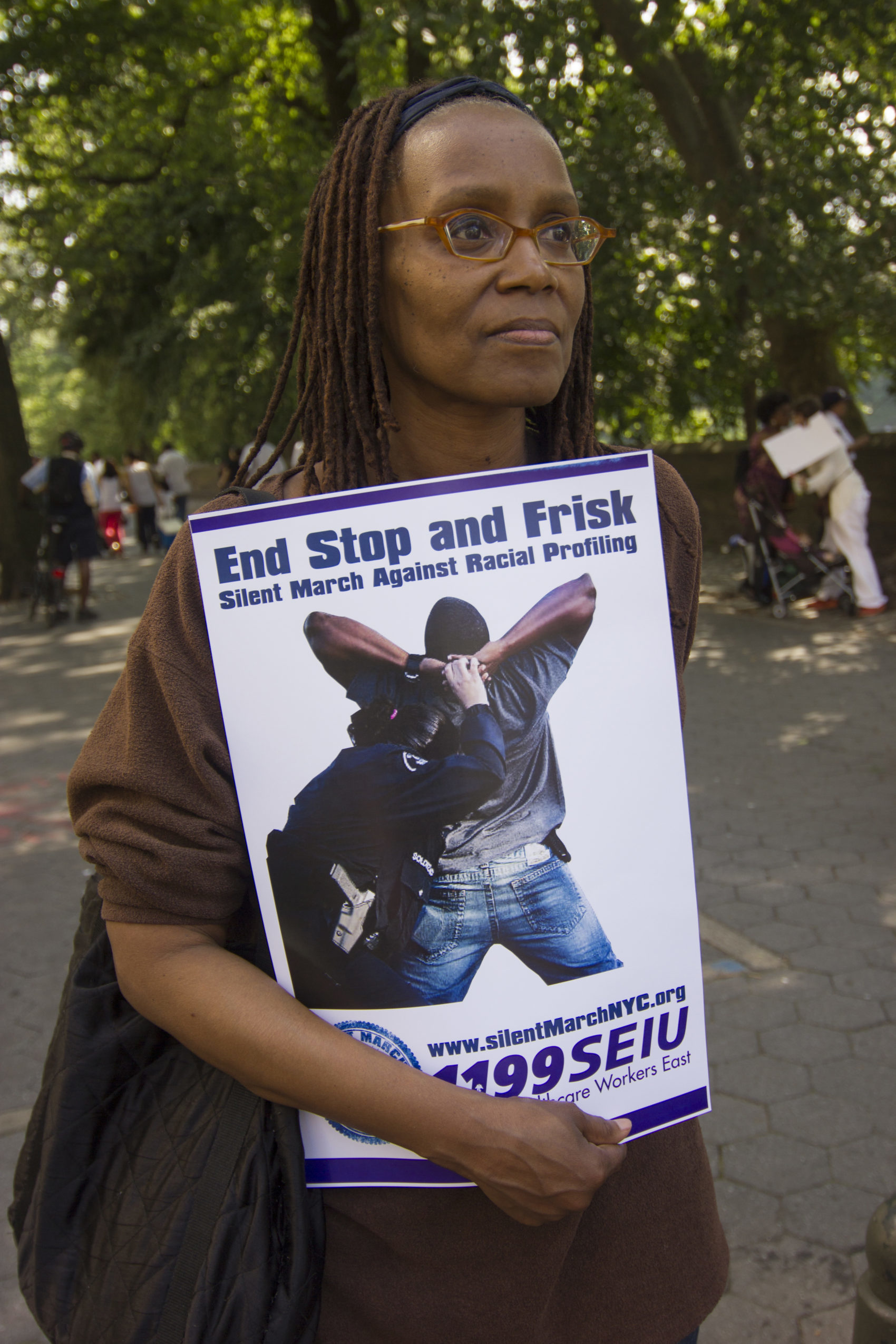Why Police Violence Is A Public Health Problem
“A public health approach neither accepts harm as a given nor accepts punishment as prevention.”

Spotlights like this one provide original commentary and analysis on pressing criminal justice issues of the day. You can read them each day in our newsletter, The Daily Appeal.
Last week, Joseph Goldstein of the New York Times reported the devastating story of Khiel Coppin and Na’im Owens, two brothers, both of whom were both shot dead by NYPD officers. Khiel, the older brother, was killed in 2007; Na’im, the younger, in 2014. The boys lived and died in the Bedford-Stuyvesant neighborhood of Brooklyn. Their mother, Denise Elliott-Owens, a teacher from Trinidad and Tobago, moved to New York in 1990 with dreams of becoming a lawyer someday. Her sons were 18 and 22 when they died. Goldstein spoke with Elliott-Owens and other family members.
Goldstein describes the circumstances of Khiel and Na’im’s deaths. Khiel was unarmed when police officers shot him, mistaking the hairbrush he held inside his sweatshirt for a gun. Na’im was armed, shooting as plainclothes and uniformed officers chased him, two months after police had informed him that his life was at risk because of money owed to him.
But for Na’im, at least, the police violence did not begin the day of his own death. First, he lost his unarmed 18-year-old brother to police bullets. Then months later, he became a regular target for cops. As Goldstein writes, Na’im, a 16-year-old Black boy, “had reached an age when the police began to notice him.”
Na’im’s adolescence overlapped with stop-and-frisk’s ascendance. In 2008, the year he was first stopped, there were 540,000 stops recorded by police officers, according to Goldstein. That number continued to climb until 2011, when it peaked at over 685,000 stops. The program experienced a significant expansion under Mayor Mike Bloomberg, who touted stop-and-frisk as an effort to address gun violence. The reality was that guns were recovered in less than 0.2 percent of all stops. The program subjected Black and Latinx boys and men to routine humiliation and abuse. Nearly 90 percent of stops from 2002 to 2011 were of Black and Latinx residents.
NYPD officers began stopping Na’im regularly. The ritual degradation of being forced to lean against a car, spread his legs, be patted down, became a routine experience. He was arrested on minor charges. In a recorded interview with investigators from the Civilian Complaint Review Board, he described how an officer beat him with a baton.
“It changed how I think he saw himself,” his sister Kay told the New York Times. (A lawyer, she asked to be identified only by a nickname.) “Stop-and-frisk is one of the reasons I think why our paths diverged and Na’im went toward the street.”
This month, the American Journal of Public Health published an issue focused on the public health concerns surrounding mass incarceration. The articles examine matters including the relationship between negative police encounters and depression for Black men, solitary confinement, and mass incarceration’s relationship to climate change. Several look at the effects of criminalization and incarceration on health, including mental health, at the individual and community level.
This issue of the journal comes more than a year after the American Public Health Association, a 25,000-member association, adopted a statement concerning police violence.
It was the first time that the association had done so, and the statement was urgent, clear, and ambitious. “Law enforcement violence is a critical public health issue,” it opens. The group End Police Violence, which drafted the statement and organized for years around its passage, described it as “firmly committed to a public health alternative, recommending upstream, community-based and community-led solutions.” Rewire reported at the time that the move by the organization could “galvanize new research that focuses on the root causes of law enforcement violence.” Also, the article continued, given the “relative lack of good data about law enforcement violence, a dearth caused largely by a lack of law enforcement transparency,” public health researchers could use their expertise to generate statistics and data that have been lacking for too long.
“Inappropriate stops by law enforcement” were identified as “one form of psychological violence with serious implications for public health.” The statement referenced studies that have found that “stops perceived as unfair, discriminatory, or intrusive are associated with adverse mental health outcomes, including symptoms of anxiety, depression and post-traumatic stress disorder.”
An article in the recent American Journal of Public Health assessed the progress in achieving the November 2018 statement’s recommendations. Interventions that minimize exposure to law enforcement violence and its health consequences are actionable, it concludes. More fundamentally, the authors argue for the important role public health can play to support organizers and affected communities.
They wrote: “A public health approach neither accepts harm as a given nor accepts punishment as prevention.”
This sentence, with its clarity and conviction, gives us a starting point while reflecting on the story of Khiel Coppin and Na’im Owens, and the larger conversations underway about our criminal legal system, and what safety, healing, and justice demand. It offers a straightforward refusal of the idea that safety comes through the infliction of violence. It reminds us that violent policing, criminalization, and incarceration are threats to health.
The authors conclude: “In short, to address law enforcement violence as a public health issue, it is critical that the public’s health and well-being be prioritized.”
